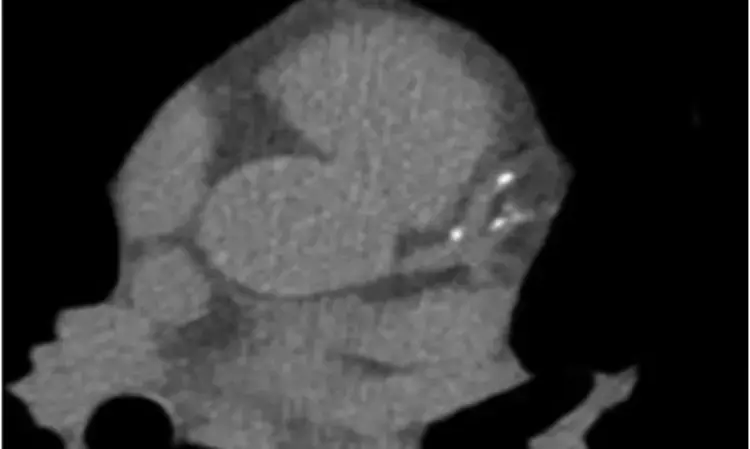- Home
- Medical news & Guidelines
- Anesthesiology
- Cardiology and CTVS
- Critical Care
- Dentistry
- Dermatology
- Diabetes and Endocrinology
- ENT
- Gastroenterology
- Medicine
- Nephrology
- Neurology
- Obstretics-Gynaecology
- Oncology
- Ophthalmology
- Orthopaedics
- Pediatrics-Neonatology
- Psychiatry
- Pulmonology
- Radiology
- Surgery
- Urology
- Laboratory Medicine
- Diet
- Nursing
- Paramedical
- Physiotherapy
- Health news
- Fact Check
- Bone Health Fact Check
- Brain Health Fact Check
- Cancer Related Fact Check
- Child Care Fact Check
- Dental and oral health fact check
- Diabetes and metabolic health fact check
- Diet and Nutrition Fact Check
- Eye and ENT Care Fact Check
- Fitness fact check
- Gut health fact check
- Heart health fact check
- Kidney health fact check
- Medical education fact check
- Men's health fact check
- Respiratory fact check
- Skin and hair care fact check
- Vaccine and Immunization fact check
- Women's health fact check
- AYUSH
- State News
- Andaman and Nicobar Islands
- Andhra Pradesh
- Arunachal Pradesh
- Assam
- Bihar
- Chandigarh
- Chattisgarh
- Dadra and Nagar Haveli
- Daman and Diu
- Delhi
- Goa
- Gujarat
- Haryana
- Himachal Pradesh
- Jammu & Kashmir
- Jharkhand
- Karnataka
- Kerala
- Ladakh
- Lakshadweep
- Madhya Pradesh
- Maharashtra
- Manipur
- Meghalaya
- Mizoram
- Nagaland
- Odisha
- Puducherry
- Punjab
- Rajasthan
- Sikkim
- Tamil Nadu
- Telangana
- Tripura
- Uttar Pradesh
- Uttrakhand
- West Bengal
- Medical Education
- Industry
CAC Testing may help predict CAD in Younger Patients at ASCVD risk: study

Coronary artery calcium (CAC), measured by noncontrast cardiac computed tomography (CT), is a noninvasive method to assess subclinical coronary atherosclerosis.
Coronary artery calcium (CAC) scoring by CT is recommended for risk stratification among adults 40 years of age at borderline to intermediate risk for initiating primary prevention pharmacotherapy.
The progression of the Agatston CAC score follows an expected exponential growth trajectory and the optimal timing and determinants of initial conversion from CAC 0 to CAC>0 are unknown. Predicting the initial conversion to CAC >0 can help to determine the recommended age for initiating CAC testing in younger adults and identify at-risk individuals. Currently, ASCVD risk equations help to guide
Subclinical atherosclerotic disease imaging at middle adult age. In this age group, CAC scores of >0 or >100 are commonly used thresholds because CAC <100 represents mild coronary atherosclerotic plaque burden, whereas a CAC score >100 suggests a potential for progression toward very high CAC scores. However, such approaches may have limited value in younger adults because of the strong reliance of ASCVD risk equations on age, and the lower expected
CAC burden in young adults.
Omar Dzaye et.al, conducted this study to determine the ideal age at which a first CAC scan has the highest utility according to atherosclerotic cardiovascular disease (ASCVD) risk factor profile. A total of 22,346 CAC Consortium participants aged 30-50 years who underwent noncontrast computed tomography were included. Sex-specific equations were derived from multivariable logistic modeling to estimate the expected probability of CAC >0 according to age and the presence of ASCVD risk factors.
Observations of this study are
1) 34%had CAC>0, with median CAC score of 20.
2) Compared with individuals without risk factors, those with diabetes developed CAC>0 6.4 years earlier
3) Whereas smoking, hypertension, dyslipidemia, and a family history of coronary heart disease were individually associated with developing CAC 3.3-4.3 years earlier.
4) The optimal age for a potential first scan would be at 36.8 years in men and 50.3 years in women with diabetes, and 42.3 years in men and 57.6 years in women without risk factors.
Limitations of the analysis include a low proportion of non-White participants and a relatively high proportion of participants with a family history of CHD compared with the general population.
Source: Journal of the American College of Cardiology.
doi.org/10.1016/j.jacc.2021.08.019
MBBS, M. D. Respiratory Medicine
Dr Sravan Kumar V, completed his M. B. B. S from SRMC, Nandyal and M. D. in Respiratory Medicine from the JSS Medical College, Mysore. After completing MD. he worked as Senior resident in Kasturba Hospital, Manipal. He is actively involved in various research activities of the department. Currently he is working as senior resident in Mallareddy medical college for women, Hyderabad. He can be contacted at editorial@medicaldialogues.in.
Dr Kamal Kant Kohli-MBBS, DTCD- a chest specialist with more than 30 years of practice and a flair for writing clinical articles, Dr Kamal Kant Kohli joined Medical Dialogues as a Chief Editor of Medical News. Besides writing articles, as an editor, he proofreads and verifies all the medical content published on Medical Dialogues including those coming from journals, studies,medical conferences,guidelines etc. Email: drkohli@medicaldialogues.in. Contact no. 011-43720751


